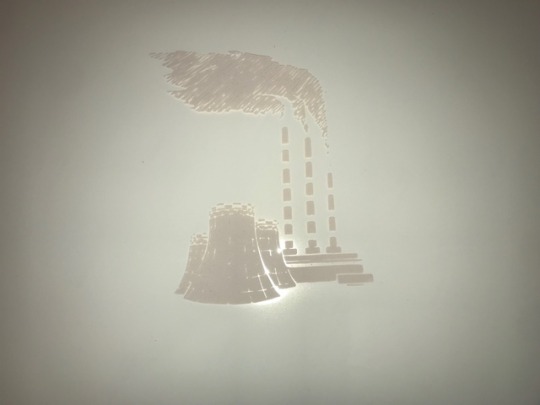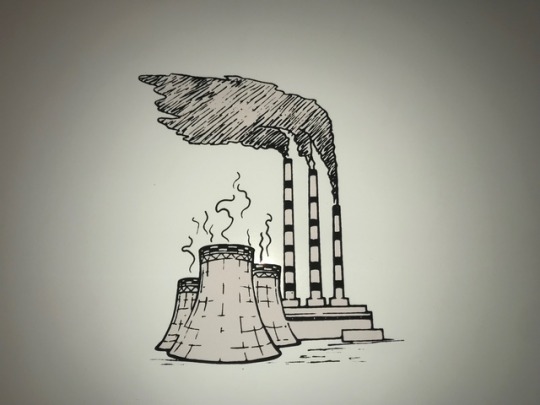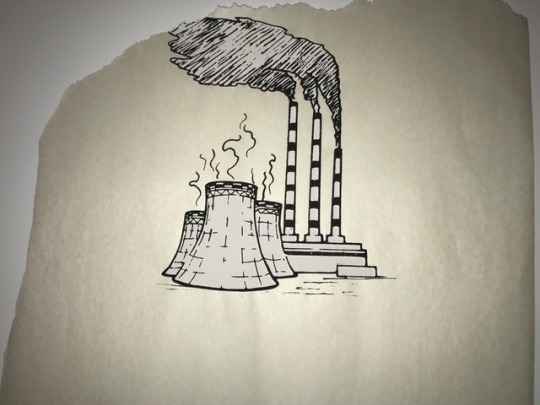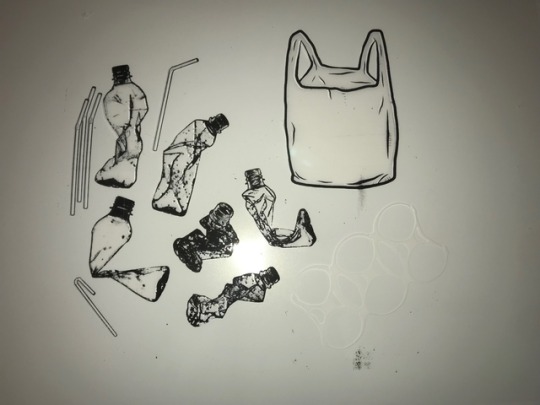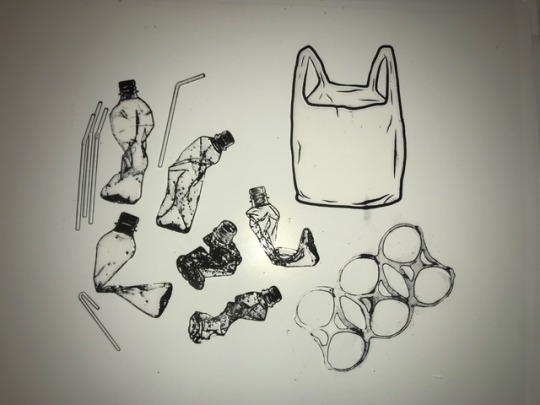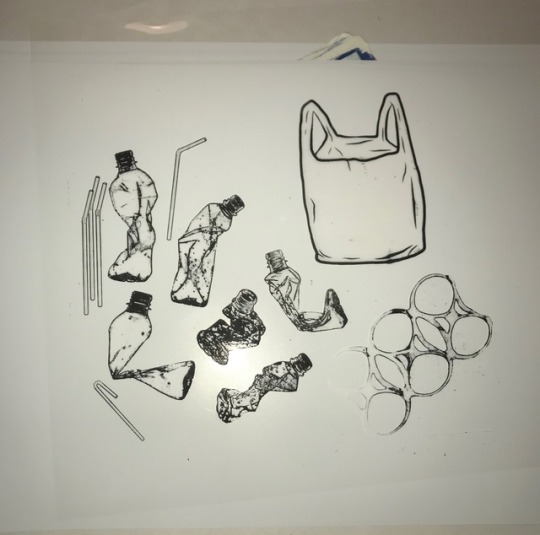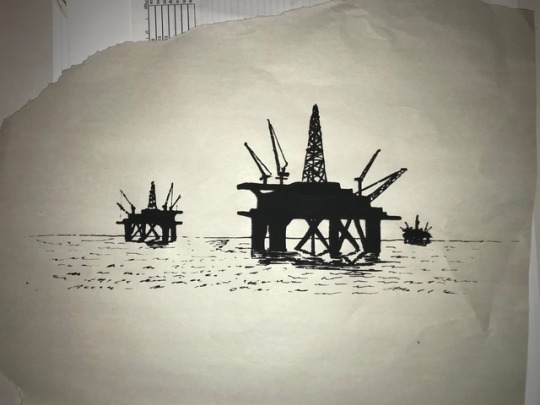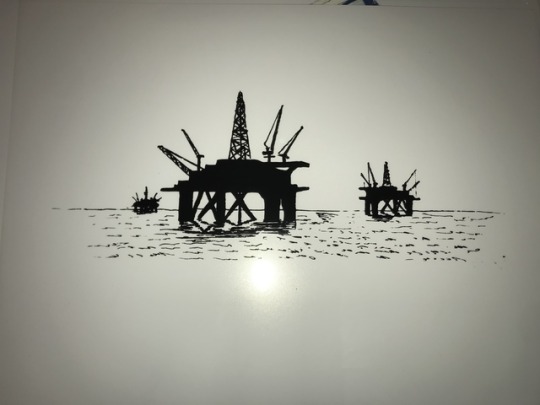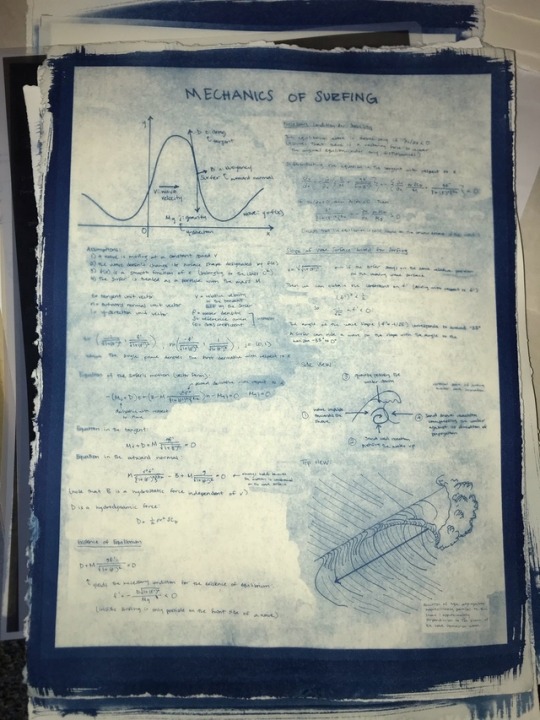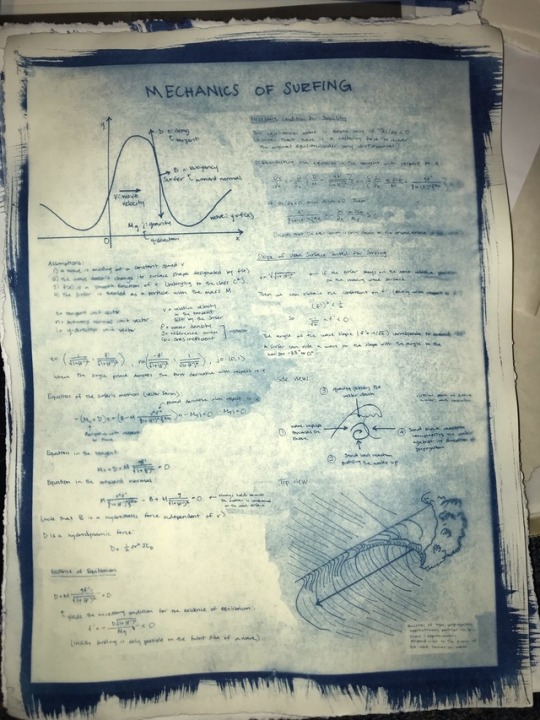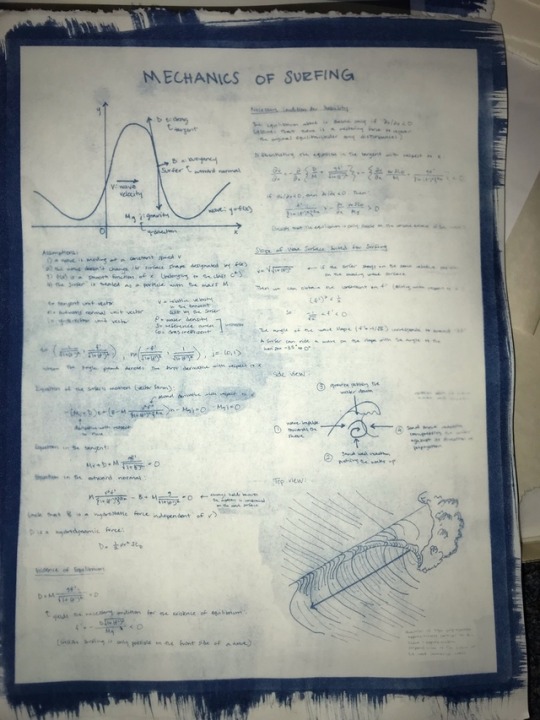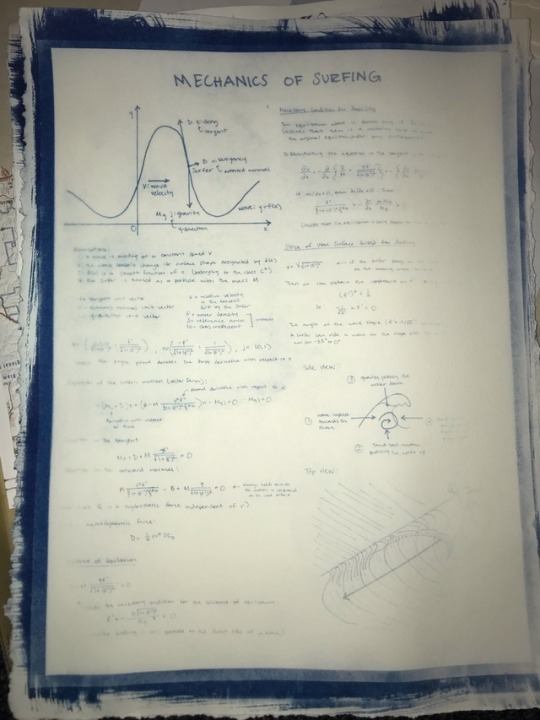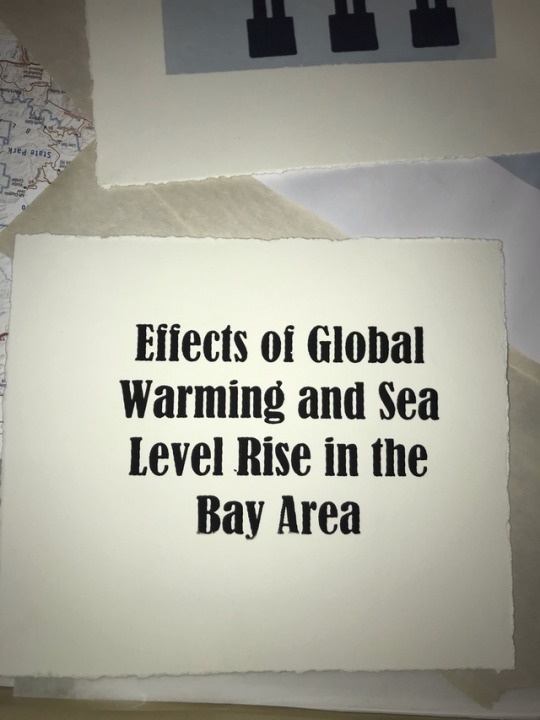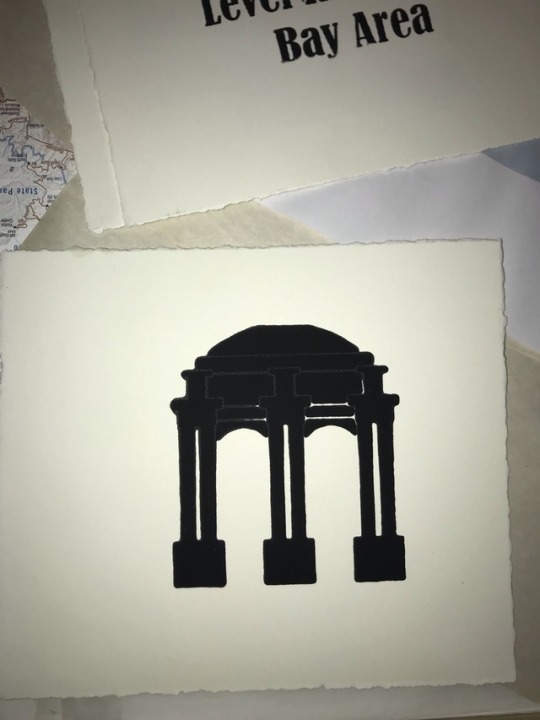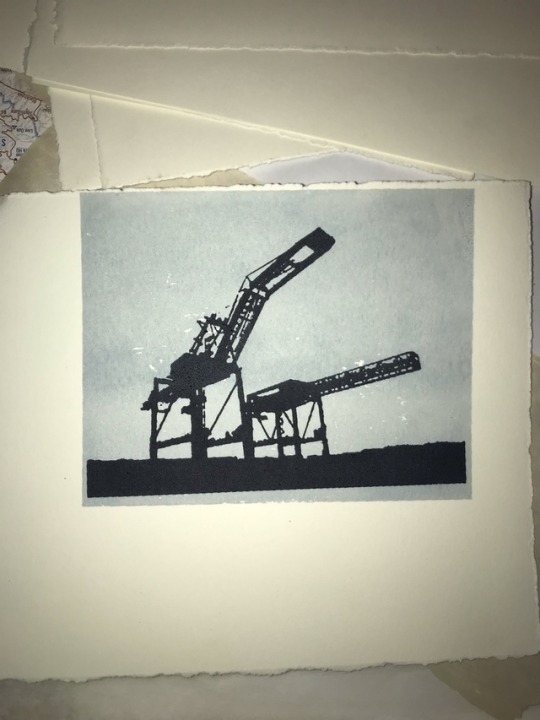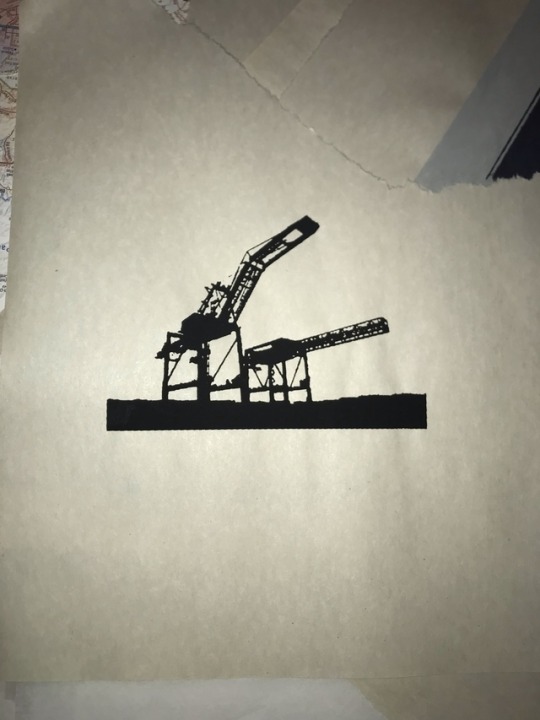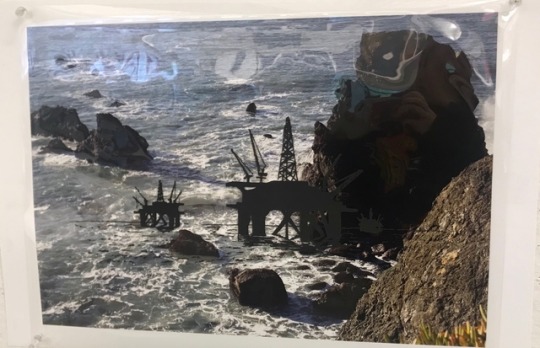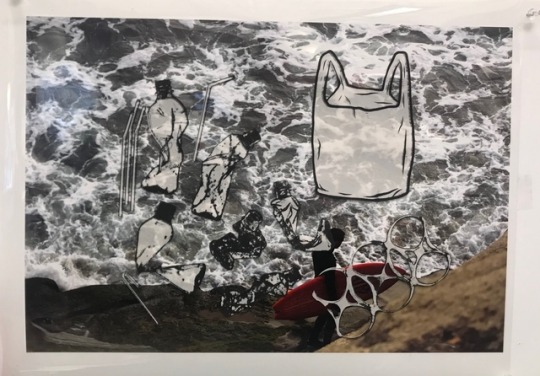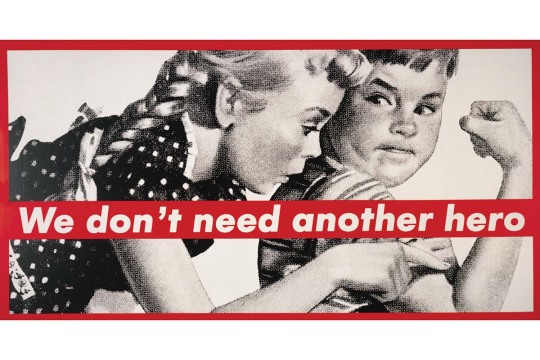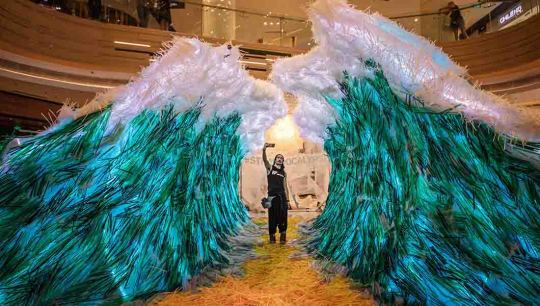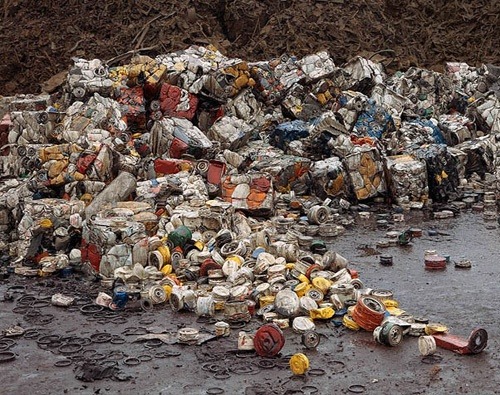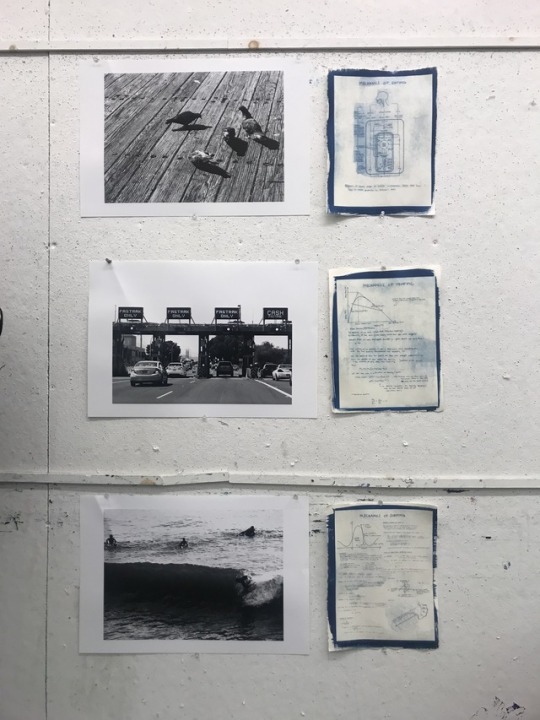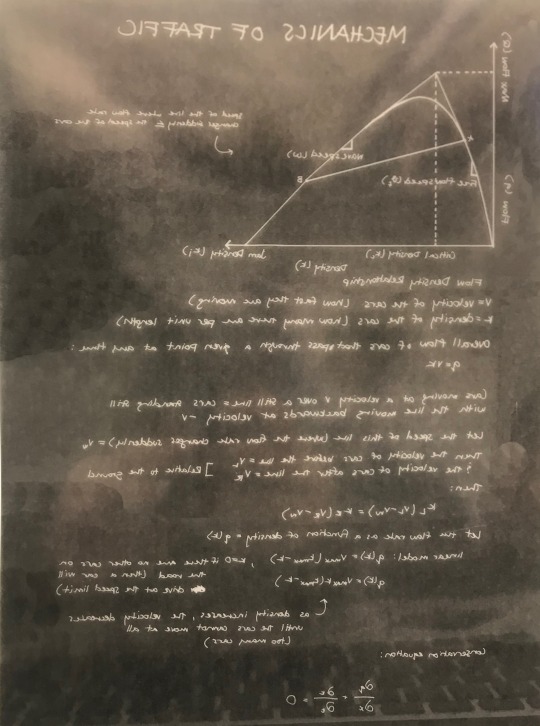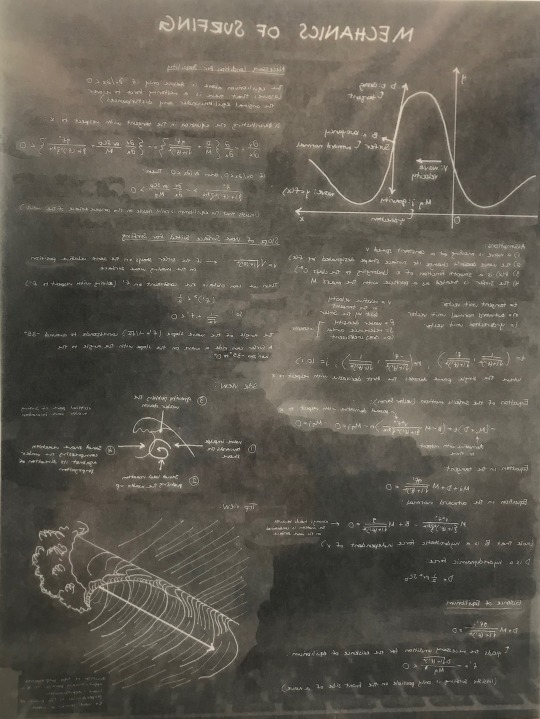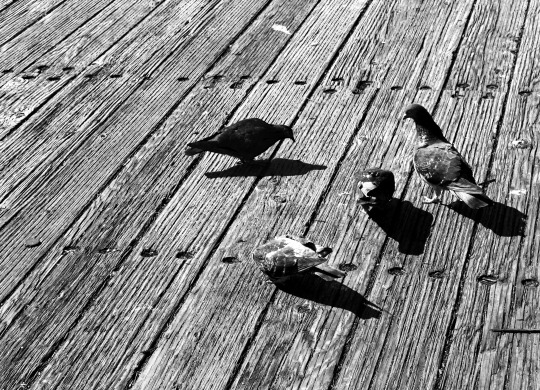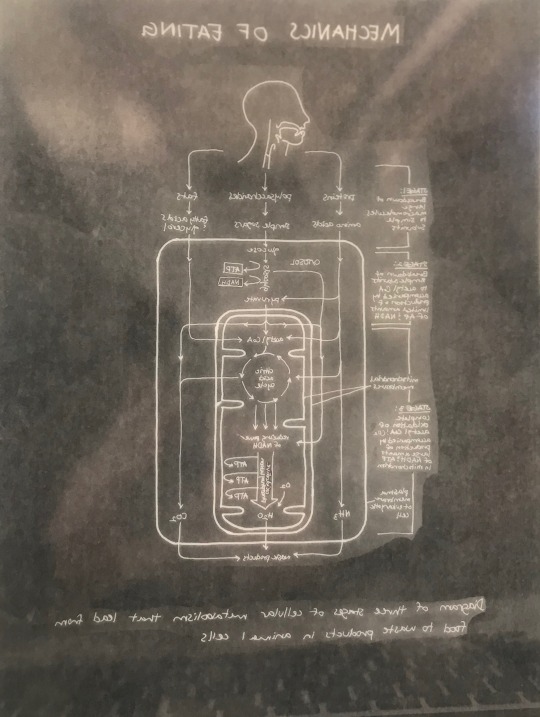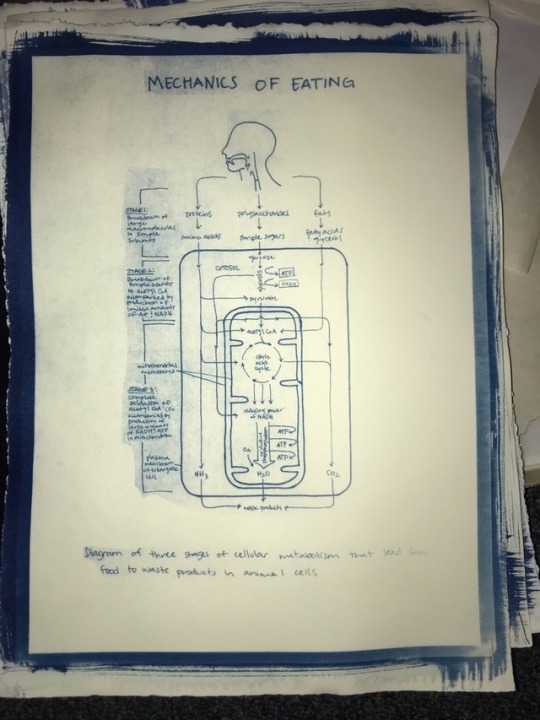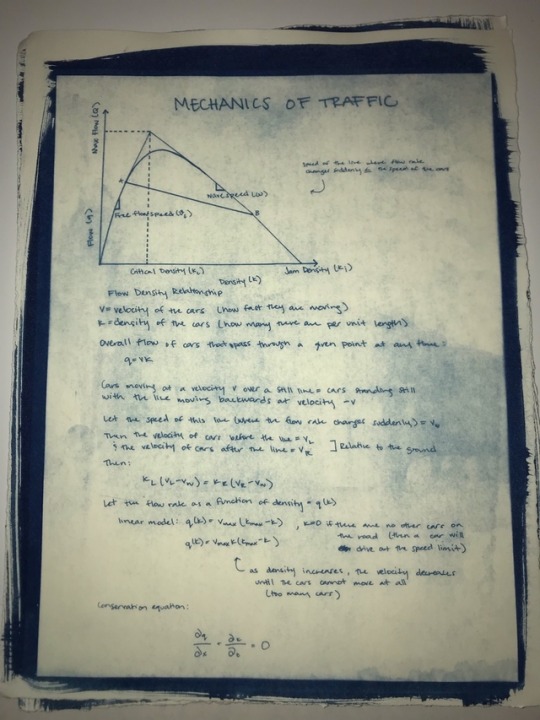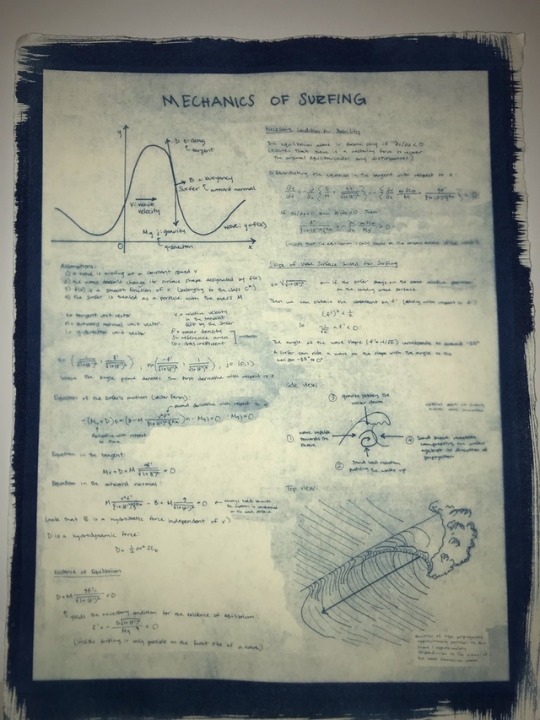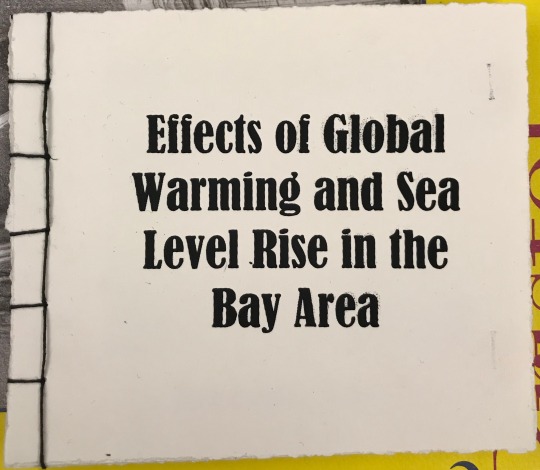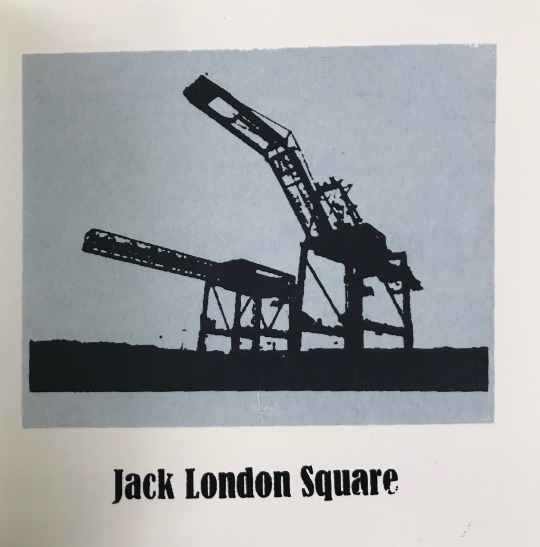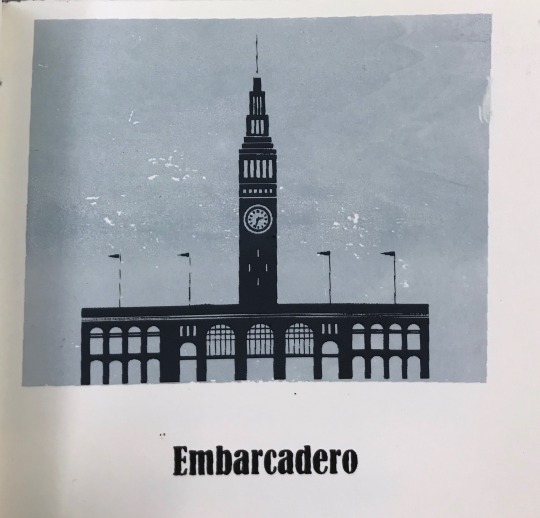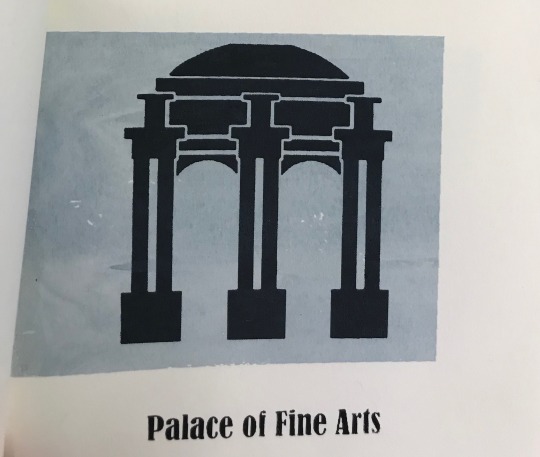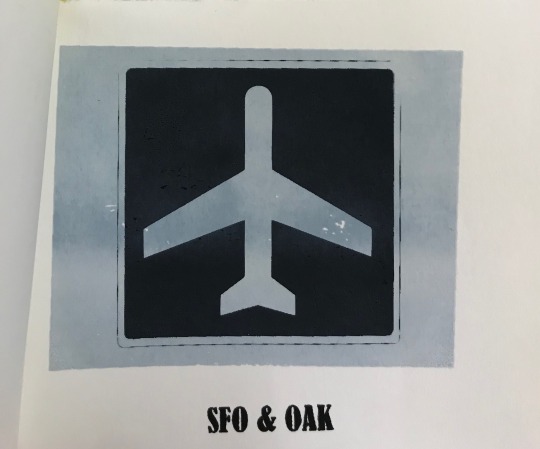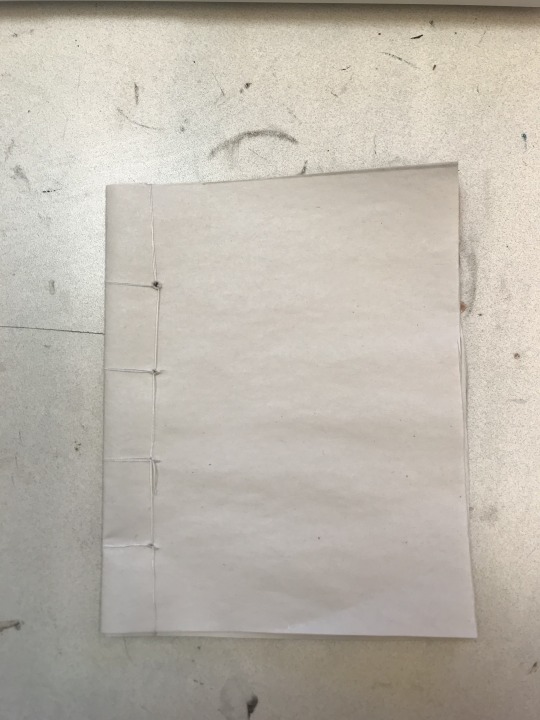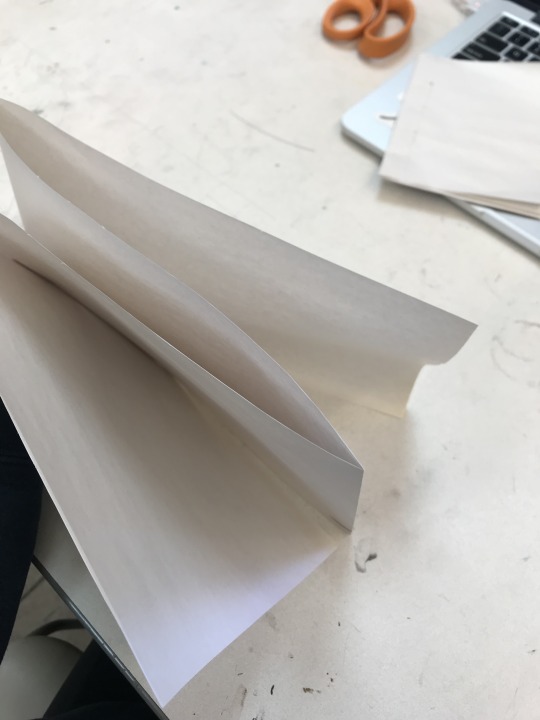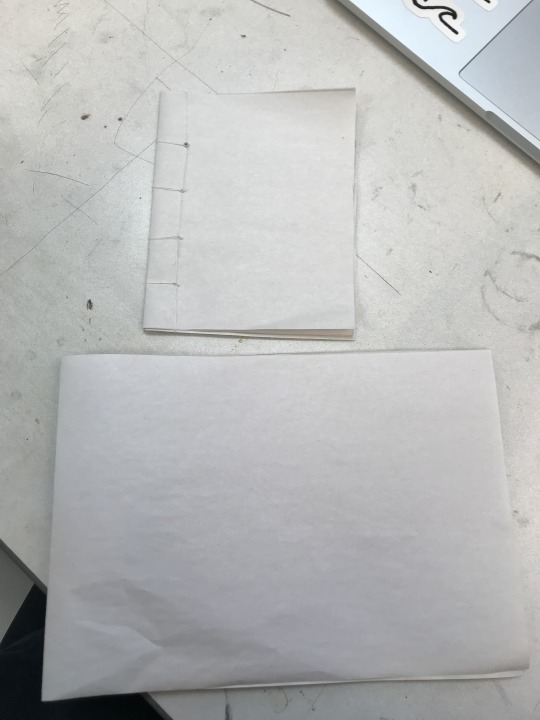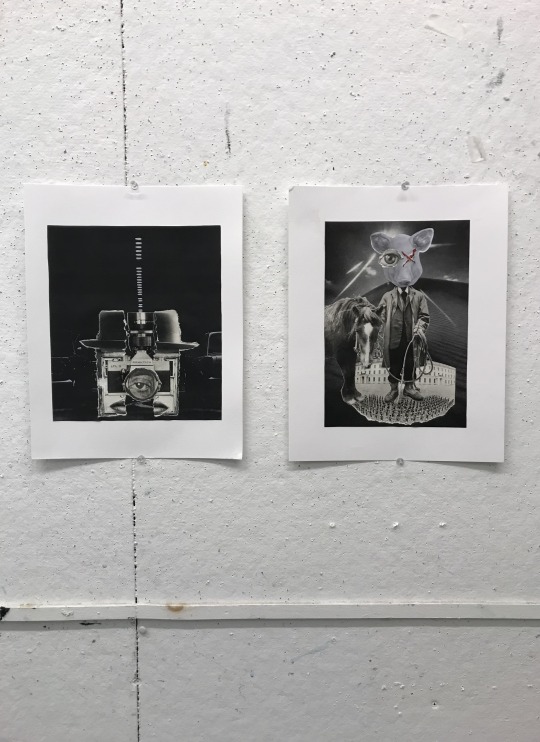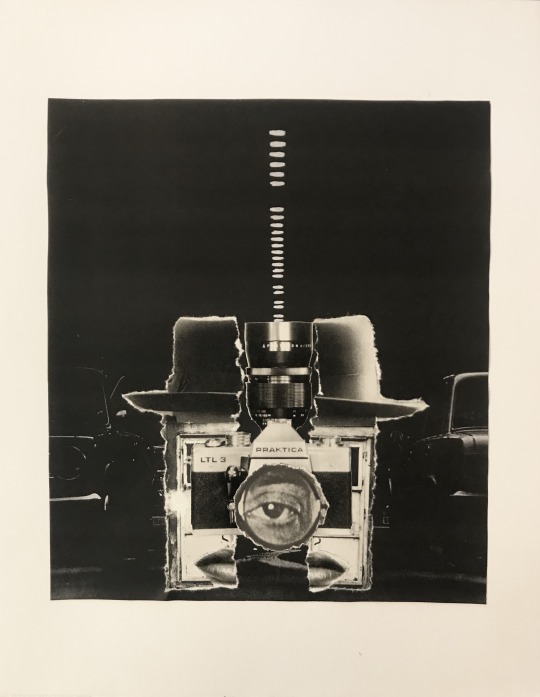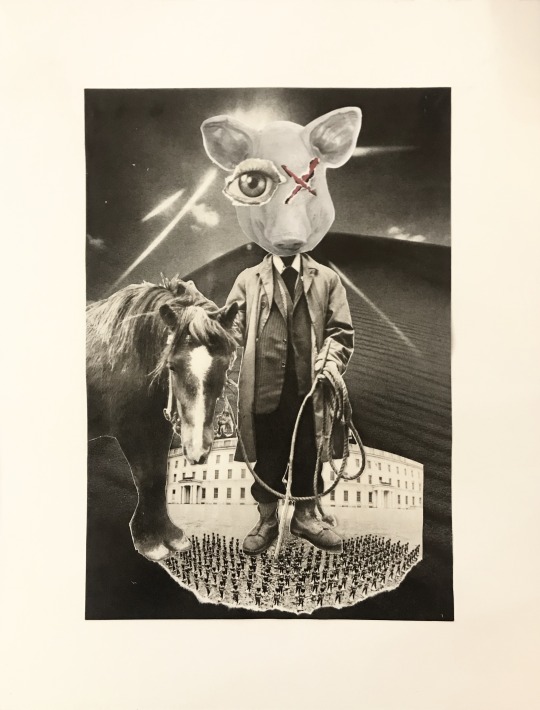Text
Final Artist Statement
For my project, I started off exploring the work of Barbara Kruger as an influence. I also knew I wanted to combine screen-printing with photos I took. I was interested in her multimedia works combining type and image to convey a feminist cultural critique. A lot of her work is politically charged, which I wanted to include in my work. However, since I prefer to capture images of the environment I am in rather than focus on specific human subjects, and because I am particularly interested in climate change and the ocean, I wanted my project to commentate on environmental issues rather than feminist critique. I saw a sculpture called “Strawpocalypse” that is an art installation of 168,000 littered straws in the form of waves in Ho Chi Minh City, Vietnam that is representative of plastic pollution. I also learned of a photographer, Chris Jordan, who takes photos of American mass consumption. Combining the two, I turned to the ultimate root, the oil industry, to focus on and critique for polluting the oceans.
In this series, I explore the effects of the oil industry on oceans by highlighting three stages of crude oil that are especially detrimental to the environment: harvesting, processing, and consumption/waste. This idea is conveyed through printing an oil rig, symbolic of harvesting, a power plant, symbolic of processing, and common plastic items used by people, symbolic of consumption and waste, on a sheet of acetate. By then layering these prints on photos take of the ocean, I juxtapose images of nature and one of the biggest agents polluting it, humans and the oil industry. The symbols printed on the acetate are kept the relatively simple as to stress the natural beauty of oceans that have been marred by humans.
0 notes
Text
Artist Statement #3
In this series, I explore the math and science behind three activities most common in my downtime away from school: eating, driving, and surfing. By photographing an image of pigeons eating on a pier, cars in traffic going through a toll, and surfers in the water, I highlight the commonality of those activities in general, not just a reflection of me, through animal, object, and human. I then create cyanotypes that explain the mechanics behind the actions; like blueprints are to the construction of a house, the cyanotypes are to the images I have taken. Additionally, by handwriting these cyanotypes, I create a more personal feel from the generalized images, as these are notes I have taken and images I have taken to create a portrait of myself without actually creating a traditional image of my actual self. By incorporating math into my art, I also combine both areas of my studies here at HWS, reflecting the work I have most focus and expertise on. I keep the imagery simple and straightforward as to make the unconventional portrait of myself more easily understood.
0 notes
Text
Artist Statement #2
In this series, I explore the effects of global warming and climate change in the San Francisco Bay Area through by highlighting certain landmarks and areas on a road map of Northern California that would be flooded and/or submerged (underwater) when sea levels rise in 2050 and beyond according to studies and reports done by the government. This idea is conveyed through printing of what the new coastline would look with higher sea levels directly on a map of the San Francisco Bay as it appears today. By then printing specific places back on top of the print of the bay, I demonstrate how these areas will be affected by global warming and subsequent rising sea levels as these places that I frequently visit today will not be accessible in 2050 if we do nothing to combat climate change. The legend book goes further into detail, including images printed of what the places highlighted on the map look like to people not familiar with the area. Additionally, I print a transparent blue layer on top of the images in the legend to more obviously show that these places will be flooded and/or submerged upon rising sea levels. I kept the images relatively simple as the main focus of the work is the idea of repercussions of climate change if we do nothing to prevent continued global warming.
0 notes
Text
Art and Architecture Series Talk: Tom Carpenter
This talk was about using technology for unintended purposes, specifically using copy technology for photographic purposes. Tom Carpenter started the lecture talking about the broad history of copy technology/electrophotography. The first print was made in 1938 on zinc plates coated with sulfur since it can hold an electromagnetic charge, but the concept of a print into a workable product was met with rejection because there was no market for making copies. In the 1950s, the flat plate system where a selenium plate was charged, put in a copy camera, and then used to photograph an office document, was discovered, but it still was not an efficient way to make copies. This process, xerography, works by charging a metal plate to give it a positive charge, placing it in the camera, and exposing the image to lose the charge in the metal plate (like charges repel so the places not charged will attract toner). It was not until the 1970s that the Xerox full color copy machine came out.
He then discussed how he got into where he is now. He’s trying to push the field further, using different chargeable materials to make prints with, specifically how to replace toner with human hair. He was able to make prints with hair but could not transfer copies onto a different material.
Overall, the topic of the talk was interesting to learn about, but the way Carpenter went on talking about it was not; he tended to drone on at points. He spent most time discussing the history of the field and little time talking about his own work, an aspect he could improve on. I prefer doing photography over drawing and painting, so I enjoy hearing about how the field is expanding, but Carpenter made it difficult to stay focused on what he was presenting.
0 notes
Text
Artist Statement #1
In this series, I explore key themes and/or motifs in George Orwell’s books Animal Farm and 1984 through the use of magazines. These themes are conveyed through collage of found imagery. In both pieces, I combine techniques of ripping and more clean cut-outs to allow the images to better stand out amongst each other.
In the 1984 inspired piece, I use a camera, an eye, and a lens as clear symbols of surveillance, the books predominant theme. To keep from overdoing the obvious, I combine those images with a person’s head made from doors and a hat to make a singular subject composed of multiple images. To allow focus on the subject, I kept the background simple, but still in relation to the themes: an old, dark photograph of cars lined in traffic in a tunnel. The lights above in the tunnel come out of the lens as if the camera is targeting a subject to surveil. The scene of traffic disappearing at a dark vanishing point also fits with the theme of the coercion by “Big Brother” and conforming.
In the Animal Farm inspired piece, I use the pig head and horse images to parallel the animals in the book. I collage the head to the body of the man guiding the horse to show the theme of power structures and hierarchy. I give the head human qualities to further show the pigs’ overtake of power on the farm. The red “X” is added to capitalize on the creepy qualities the pig/man has and make it look even more unnatural. Like the 1984 inspired piece, this piece has a singular subject of multiple images collaged together to keep the focus on the symbols packed into it. This subject is placed on a background image of a tiny soldiers lined outside a building. The huge difference in scale of the collaged subject and the soldiers in the image further stress the idea of power struggles and hierarchy.
0 notes

